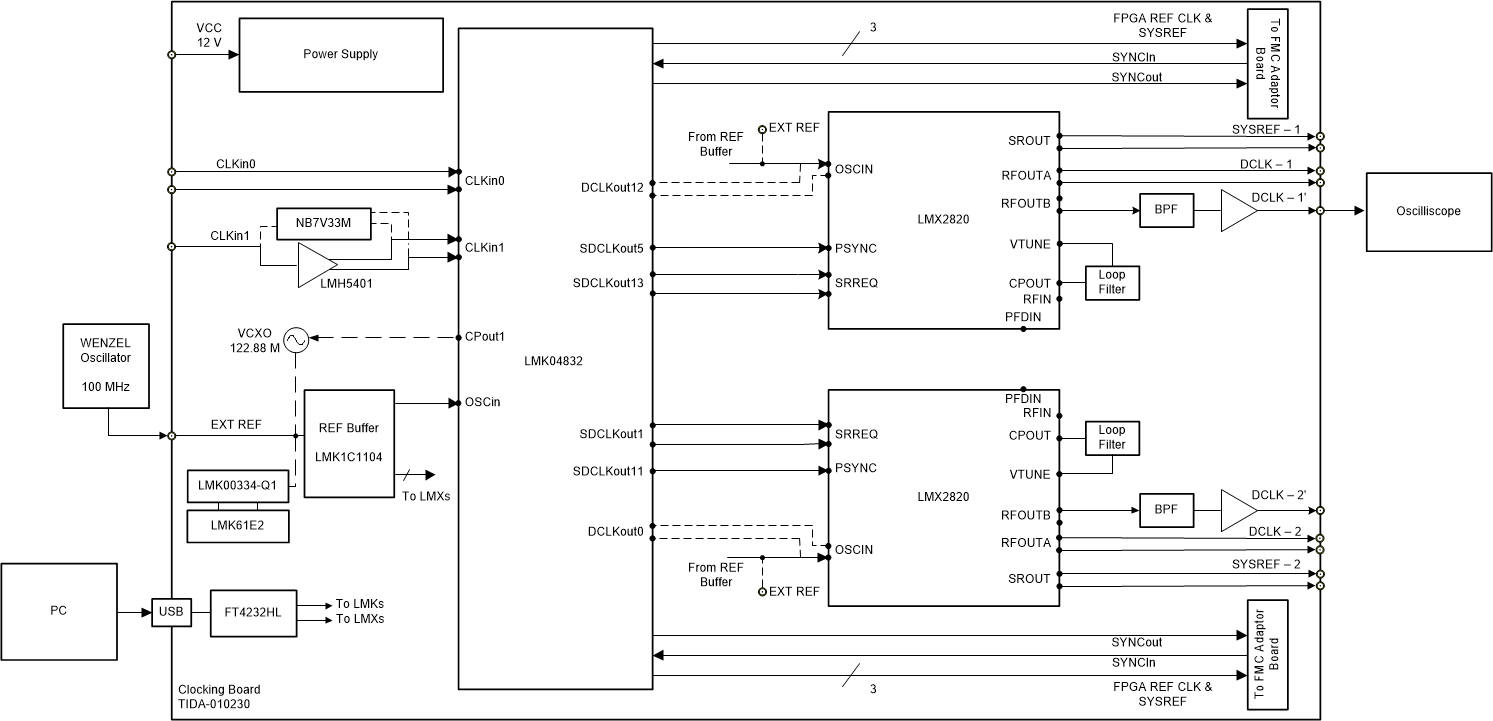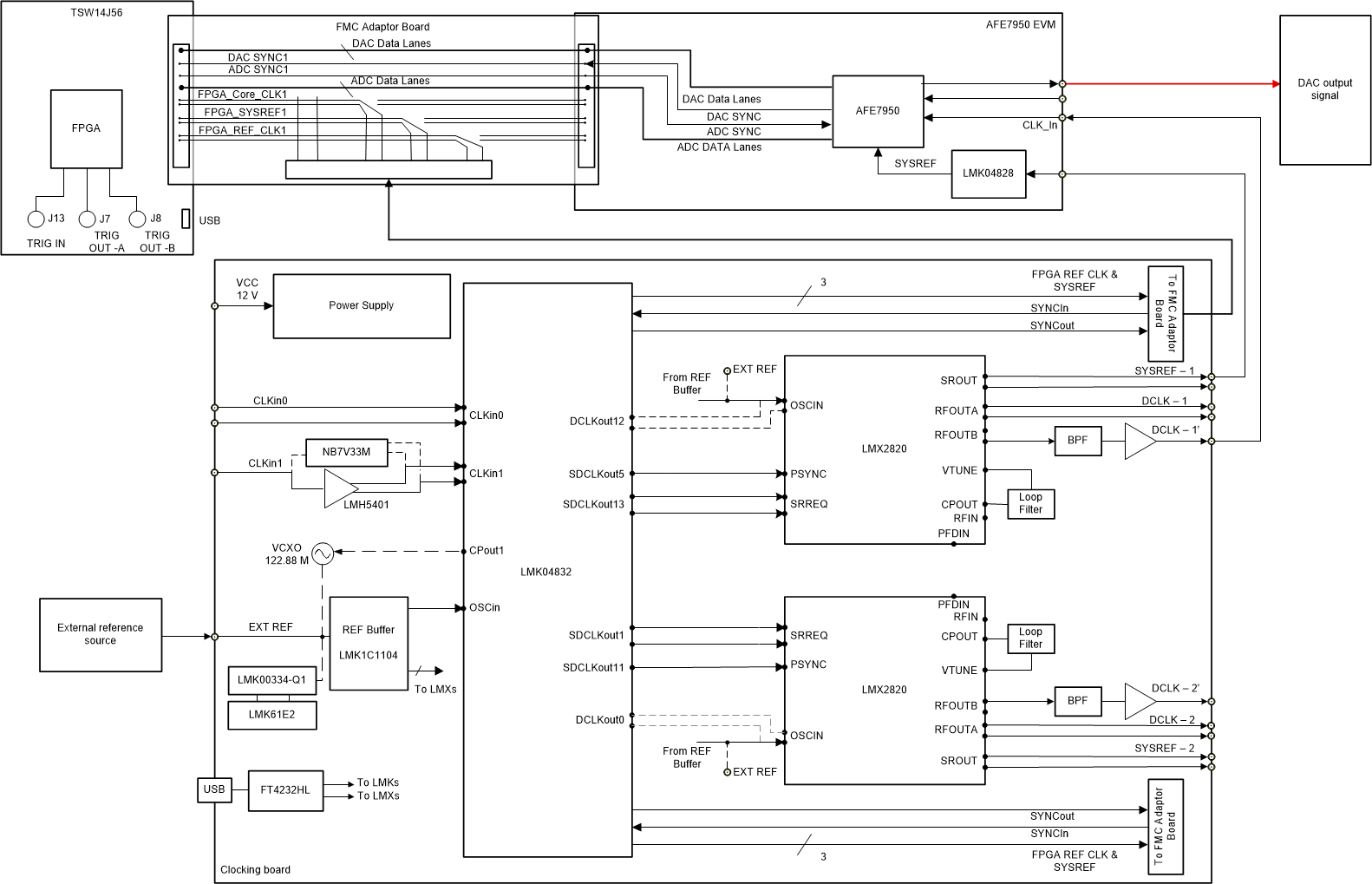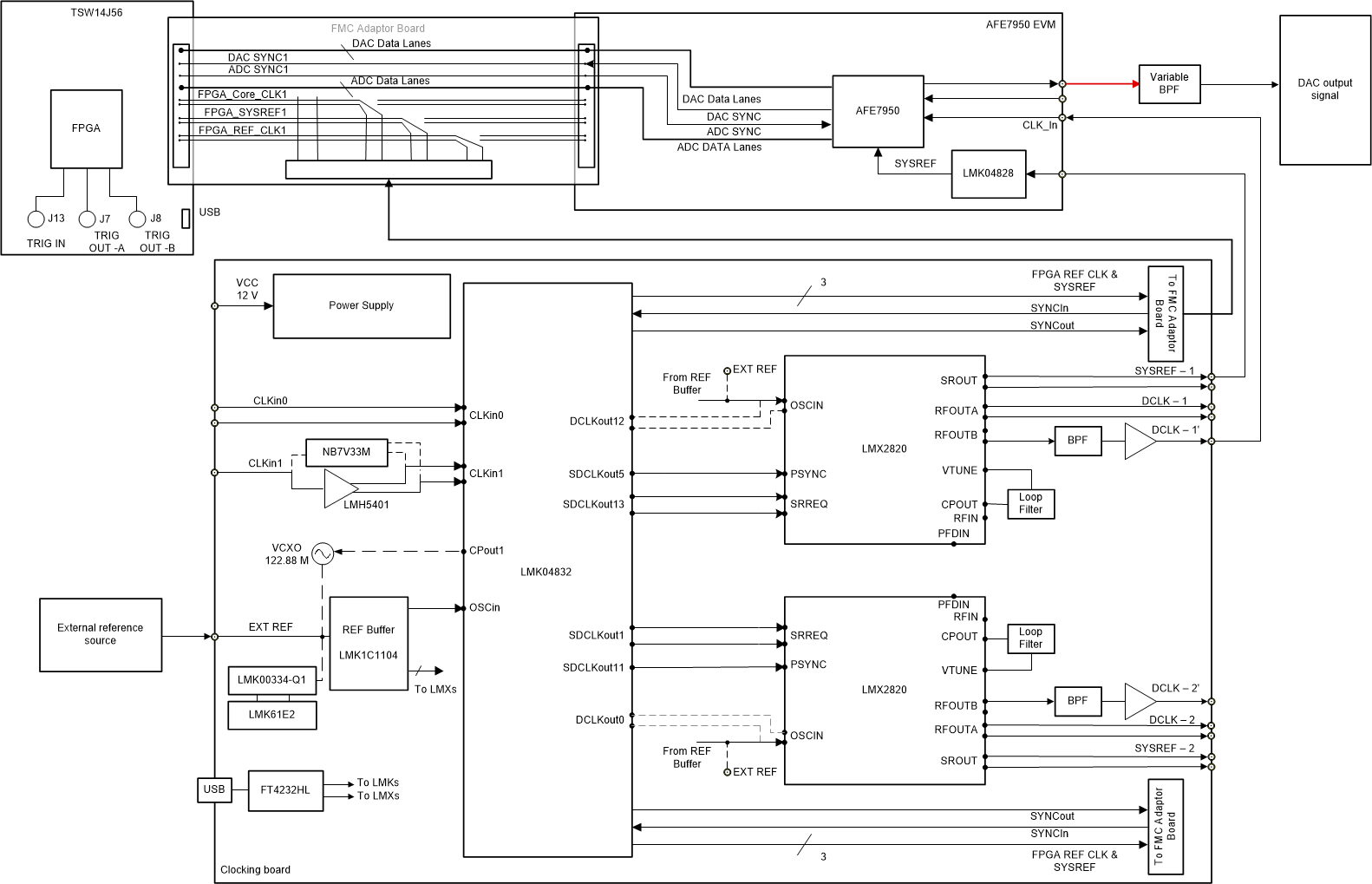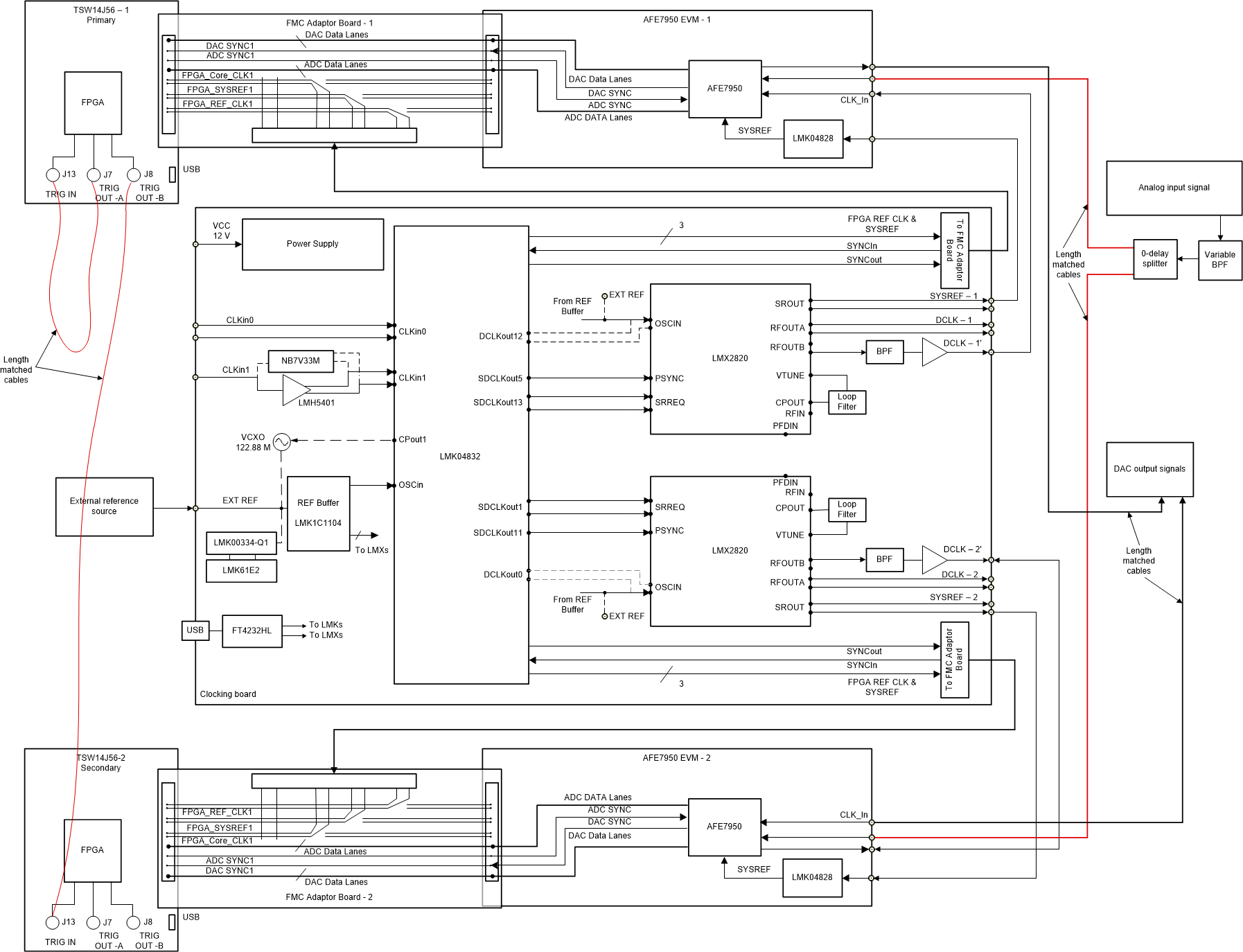ZHCU772 December 2021
- 说明
- 资源
- 特性
- 应用
- 5
- 1System Overview
- 2Hardware, Software, Testing Requirements, and Test Results
- 3Design and Documentation Support
- 4About the Author
- 5Acknowledgement
2.2 Test Setup
Figure 2-7, Figure 2-8, Figure 2-9, and Figure 2-10 show the test setup for LMX2820 phase noise measurement, transmitter performance (SFDR, IMD3) measurement, receiver SNR measurement, and channel-to-channel skew measurement for multiple AFE7950s, respectively.
Use the following steps for each test setup:
- Connect a 12-V/3-A power supply to the J23 connector of the clocking board.
- Connect two separate 5-V/4-A power supplies to the J35 connector of both AFE7950EVMs.
- Connect two separate 5-V/3-A power supplies to the J11 connector of each TSW14J56EVM.
- Follow the programming sequence in Section 2.1.2 for each board based on the test setup.
 Figure 2-7 Test Setup for LMX2820
Phase-Noise Measurement
Figure 2-7 Test Setup for LMX2820
Phase-Noise Measurement Figure 2-8 Test Setup for AFE7950
Transmitter SFDR and IMD3 Measurement
Figure 2-8 Test Setup for AFE7950
Transmitter SFDR and IMD3 Measurement Figure 2-9 Test Setup for AFE7950
Receiver SNR Measurement
Figure 2-9 Test Setup for AFE7950
Receiver SNR Measurement Figure 2-10 Test Setup for Two AFE7950
Analog Channel-to-Channel Skew Measurement
Figure 2-10 Test Setup for Two AFE7950
Analog Channel-to-Channel Skew Measurement